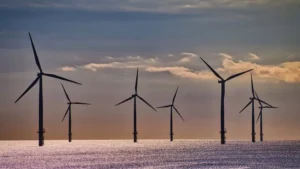Switching to renewable energy could save trillions – study

Switching from fossil fuels to renewable energy could save the world as much as $12tn (£10.2tn) by 2050, an Oxford University study says.
Read More on the news

Switching from fossil fuels to renewable energy could save the world as much as $12tn (£10.2tn) by 2050, an Oxford University study says.
Read More on the news

Switching from fossil fuels to renewable energy could save the world as much as $12tn (£10.2tn) by 2050, an Oxford University study says.
Read more on this news.
Machine learning is headed for a major growth spurt. After ticking past the $1 billion mark in 2016, the machine learning market is expected to hit $40 billion by 2025, according to a new report by Research and Markets.
Of course, the first challenge of machine learning is identifying a use case. Not sure where to start? To make the most of this explosive technology, consider how today’s top companies, ranging in industry from retail to hardware to media, are using it:
Even better, there’s plenty of room for wind’s costs to continue their sharp decline, according to a new report from Lawrence Berkley National Laboratory (LBNL) and the National Renewable Energy Laboratory (NREL).
Wind’s previous cost declines were largely driven by technological advances that allow modern turbines to reach stronger, steadier winds. That lets them generate more electricity at a lower cost. Improvements in domestic manufacturing and economies of scale also made it cheaper to build new wind turbines. While there are still gains to be made in these areas, operations expenditures (OpEx) present a huge opportunity for new gains and were the focus of NREL and LBNL’s new study.
The oldest rotary windmills are considered to have been used regularly in agriculture and other purposes since 2000 B.C. by peoples of what would today be China and the Middle East who already sensed what the German physicist Albert Betz, the father of physics governing modern wind turbines, called The Theory of Wind Energy, presented and published in his book “Wind-Energie” at the beginning of the 20th century, almost 3000 years later.
The first wind turbine as we know it was created in 1888. Named the Brush turbine, an automatic wind turbine, it measured 17 m in diameter and had 144 wooden blades that moved slowly. Despite its considerable dimensions, it was only capable of generating a few kW. Battery-powered, it ran for two decades. The first modern turbine saw the light in the 1940s in the USA. It has been 130 years since mankind began to supply themselves with electricity produced by wind power.
California has some of the country’s most ambitious clean energy goals, making it a large potential market for offshore wind. The state recently committed to powering 60 percent of its electricity from renewable energy by 2030 and 100 percent from zero-emission energy sources by 2045.
Offshore wind can help California achieve its climate goals because it can deliver power directly to coastal load centers; the projects can be larger than land-based renewable energy installations; and offshore wind generates more energy in evening hours after the sun goes down.
Recent Comments